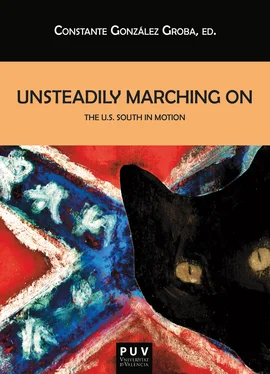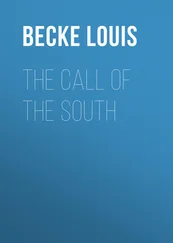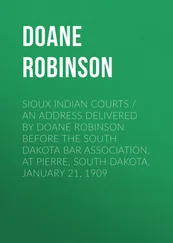The Good Life
Jay McInerney was one of the young stars on the literary scene in the 1980s. Together with his buddy Bret Easton Ellis he gave a satirical portrait of the hedonistic lifestyle in Manhattan in the 1980s. But while The Good Life still focuses on Manhattan’s upper-class, the tone is much more subdued, serious, almost sacred. This very traditional story tells of two married Manhattan couples. Russell and Corrine Calloway and their 6-year-old twins live in a rented loft in TriBeCa and are “trying to subsist on less than two hundred and fifty grand a year” (18). Several miles uptown, perched near the top of the Upper East Side’s social register, the wealthy ex-investment banker Luke McGavock and his beautiful socialite wife Sasha live with their teenage daughter Ashley.
Both marriages have become routine, and the terrorist attacks serve as a catalyst. Luke, who makes it out of the World Trade Center alive, meets Corrine on the street. They both start volunteering at a soup kitchen for rescue workers, fall in love and start an affair. One of the novel’s recurring themes is how the attacks upend the rigid social patterns that have guided the characters’ lives. As Sonia Baelo points out, “the soup kitchen becomes a melting pot where social differences are unimportant” (9), and Luke and Corrine’s new acquaintances include a carpenter, a policeman, a Russian exotic dancer recovering from her latest boob job, a hippie girl, an insurance adjuster, and three young women who work at Ralph Lauren.
After a drug overdose, Luke’s daughter Ashley runs away to Tennessee where her grandmother lives in Luke’s childhood home. Luke drives south to reconcile with Ashley, leaving behind him the wounded metropolis, his wife, and his mistress. And he comes into contact with a drastic change in scenery. As a contrast to the superficial Manhattan role-playing, the reader senses an immediate connection to place and the past: We are told that the house is close to “the ill-fated route that had brought Hood’s Army of Tennessee from Spring Hill to the southern edge of town, where it was devastated by entrenched Union forces” (269). Luke is surrounded by family warmth despite some friendly Dixie vs. Yankees banter. McInerney does poke fun at outsiders’ stereotypical notions of the South, such as when Luke calls Corrine back in New York, and she tells him: “Do you think I’d like it in Tennessee? I have this image of the kids riding their bikes barefoot to school and going fishing with cane poles” (277). But he immediately undercuts himself since his depiction of the South never removes itself from exactly these clichés. In fact, while talking on the phone with Corrine, Luke is in the hayloft in the barn, “the warm air in the eaves thick with the odor of the old chestnut boards .... Motes of dust swam like insects in the shaft of orange sunlight piercing the gloom through the door at the far end of the loft” (276).
We are told that “Luke wasn’t one of those for whom southernness was a religion, for whom nostalgia was an emotion more primal than lust” (278), but it is clear that he still feels a strong connection to the region. In an important scene ripe with Southern Gothic undertones, Luke, who is pondering leaving his wife Sasha for Corrine, sits in a Civil War graveyard at night, listening, “waiting for the dead to communicate. It seemed worth a shot. No one else was going to tell him what to do, and surely these men knew something about duty and honor” (289-90). Like a good ole southerner, Luke respects the wisdom of his elders and tries to gain their advice.
As these passages show, McInerney paints the South as a haven, a place of regeneration and of real values opposed to the superficial role-playing in Manhattan. His daughter Ashley kicks her addiction and brings back to New York a newfound pride in her southern roots. At the annual pre-Christmas lunch at a fancy New York restaurant, a choir performs Christmas carols and then sings “Battle Hymn of the Republic.” When they follow up with “Dixie,” Ashley, “who’d spent most of lunch trying to shrink under the table,” surprises everyone by rising and standing to attention. When she urges her father to do the same, Sasha, always keeping the right Manhattan appearances, can only shake her head “almost imperceptibly, forcing a smile of tolerant indulgence,” and bitterly commenting “Well, aren’t we the rebels,” before refusing to join her family with the acid remark: “There’s a time and a place” (330-31). With a little help from the South, McInerney can include a sort of happy ending within his larger narrative.
The Good Priest’s Son
While McInerney is a New York writer with ties to Tennessee, Reynolds Price has been considered a southern writer his entire career. In The Good Priest’s Son , the 53-year-old art conservator Mabry Kincaid is on a plane returning from Europe to New York when he learns of the terrorist attacks. Realizing that he will be unable to reach his Manhattan apartment, Mabry decides to return to his small hometown in North Carolina, where his old, ailing father still lives. But because of its southern setting, however, the terrorist attacks and their aftermath are more in the background in Price’s novel than in the other 9/11 novels, including McInerney’s The Good Life . Several reviews criticized this aspect, for instance Booklist ’s Brad Hooper, who complained that “the 9/11 aspect seems... only a manufactured feature” (1414). However, it seems quite a deliberate point on Price’s behalf, one that matches not only the reality of the aftermath outside New York City but also the protagonist’s state of mind.
Mabry is in many ways detached from the world he lives in, and it would seem that his southern background is what makes him able to ignore the present. When he learns of the attacks on the World Trade Center, his first thought is of the Civil War. And when he goes to sleep that night, it is into “a perfectly harmless dream—not murderous Muslims” (22). This mirrors the way Mabry experiences the effect, or rather the lack of effect, of the terrorist attacks in the South: “...no one said a single word about the recent disaster or gave the least hint of suppressing any knowledge of the horror. Their calm devotion to the job at hand—an old, entirely honorable game involving considerable harmless skills—was as reassuring as anything Mabry had met with in three days of efforts from all sides of the Western World” (58). As Gerald Préher points out, “The South appears as a world apart that cannot be affected by what is happening outside it” and Mabry’s decision to head south is “an apparent attempt to resist history and ignore what is going on in his country” (171, 167). The South soon comes to serve as a stark contrast to Mabry’s newfound disgust for New York. Returning briefly to his Manhattan apartment, he realizes that “he’d never enter that door again,” struck as he is with “the death that hung enormous above him… his country’s inevitable doom somehow inscribed around him in the air they were breathing” (209).
Returning to the South is of course a way of escaping the current tragedy, but as it turns out, Mabry has plenty of old demons awaiting him at home. In fact, the reason he has refused to see his home as home is because of various issues of guilt or even trauma: The death of his brother years earlier, a strained relationship with his ailing father, his guilt over years of infidelity in the wake of his ex-wife’s recent death, and as a result a strained relationship with his daughter. Add to this a decaying body with signs of multiple sclerosis, and you have an idea why The Washington Times reviewer called the novel “a meditation on how the events in one’s private life can be all-consuming even during times of grave public tragedy” (Bose).
Читать дальше












